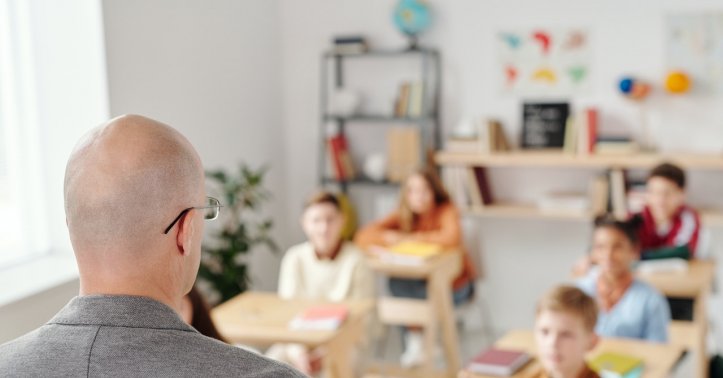
10 Tips for Engaging Students With Learning Disabilities
Over the years, countries across the world have been making more efforts towards inclusion, making way for students with learning disabilities to study in regular schools. This is certainly a welcoming change to the educational landscape.
However, this can lead to certain unique challenges for teachers. Of course, each student is different, and catering to the needs of those with learning disabilities can make the situation more delicate. A student with ADHD will need a different kind of support compared to a person with dyslexia.
Therefore, teachers have a responsibility to educate themselves on different individual symptoms to understand the needs of each student. To help, we have created a list of different strategies that you can use to engage students with learning disabilities. All of these can be easily adapted to each student and their unique requirements.
1. Apply Universal Design for Learning Principles
Universal Design for Learning or UDL is a teaching approach that ensures that all students benefit from varied forms of learning material, modes of expression, and activities to show what they have learned. This is a strategy that works for all students, not only for those with disabilities.
For example, teachers can provide instructions in multiple formats, such as a video presentation and handout for notes, so that students can go back and refer to their preferred medium for more instructions if needed. Using different formats for teaching simultaneously can be extremely helpful for different types of learners in retaining information.
2. Break Down the Information
Teachers can also engage students more by breaking down information into smaller bits. This will make it easier for the brain to digest. Some of your students might even prefer using the help of a personal essay writer from EssayPro to simplify complex topics and write them in their own words for better understanding. There are several other ways to do this.
For example, you can use a visual form of teaching, such as creating flow charts with keywords or splitting a subject into different objectives so that it is simpler for your students to follow your line of progress.
3. Use More Visual Aids
Using visual aids can be another effective tactic to engage with your students, especially with those struggling with a learning disability. This is primarily because the human brain can pick up and process images faster than text which can be more obscure for many students.
Even if you primarily use a whiteboard, you can mix things up by using pens and markers of different colors. Similarly, your entire classroom can incorporate more colors, which might make the space more welcoming for your students.
Using visual presentations, videos, or technology like AR or VR can help students develop a direct correlation between a specific word and what it means. Needless to say, this can make learning much easier, faster, and entertaining.
4. Add Flexibility to Class Assessments
Similar to offering different formats for lessons, teachers can also consider adding the same flexibility to group activities and class assessments. For instance, some students might prefer oral or slide presentations, while others might choose to submit a report on the same subject.
Similarly, while some students might want to complete an activity alone, others might want to join a group to complete a project. It is important to take flexibility and accessibility into account. These factors can play a crucial role in helping you come up with a lesson plan that incorporates the interests of all students.
5. Use Reinforcement Tools
It has already been established that repetition can be a great way to imbed a new concept into the brain. However, it won't be long before revisions and repetitions of the same kind get boring for students and lose their attention. Moreover, the focus is often an aspect that many children with learning disabilities struggle with.
Similar to learning plans, the more versatile the reinforcement techniques are, the better. Try to make them not only visual but also oral and sensory if possible. You can also try to find ways to connect theory to practical knowledge.
6. Setting Achievable Goals
If done correctly, goal setting can be highly engaging for students to take control of their own learning. If your students are older, they will be able to take advantage of opportunities to look at their own behavior and identify how they can improve. It will also help them to see for themselves how well they are progressing, which can motivate them.
Unlike the goals you set for students, encouraging them to have objectives for themselves might be more suited. Moreover, individual goals will also help a student to move forward to the next one when they have already achieved one. For one student, doing homework might be an issue, while for another student, it could be time management.
Self-imposed goals can help them understand more about their own strengths and weaknesses.
7. Try Memory Techniques
Revisions and reinforcements aside, some students might still benefit from learning a few memory techniques. These can help them connect one piece of information to another. You can engage your students with tools such as mnemonics, mind maps, or even flow charts that will help them to remember information more effortlessly.
However, you will need to find out which memory techniques are more suited for specific learning difficulties and use them accordingly.
8. Include Educational Games
Another way to boost engagement among students with learning disabilities is through the use of educational games. There are several games designed for this purpose and catering to different subjects. Many of them are fast-paced and simple enough for students to be able to learn Mathematics, Science, Geography, and more easily.
You can also use games as a means of reinforcement or a memory retention technique. The pace and engagement will help your students to remember what they have already learned.
9. Incorporate Movement Into Your Lessons
As we’ve already discussed, different students react differently to the same type of activity. Along with using colors, music, and games, you can also try to provide them with more opportunities to move around the classroom. For instance, some students might enjoy reading while walking rather than sitting down.
In other words, there is not always the need to save physical activities for PE sessions alone. You can also encourage them to dance around or include games requiring moving to make the classes more engaging.
10. Build a Rapport
Most importantly, as a teacher, you will need to dedicate time to build a relationship with your students. When you are trying to engage with them, a positive rapport can go a long way. You can start by getting on their level and getting more involved in activities they enjoy.
This means that sometimes you will find yourself teaching a class while sitting on the floor or on the playground. You will also be playing with them, engaging in their favorite games, singing along, and watching videos together - essentially sharing activities that they enjoy.
As it goes, putting these strategies into practice will certainly require some trial and error from your side. You will need to try different things to find out what works for each student. Hopefully, these tips will be a good place to start the process.








